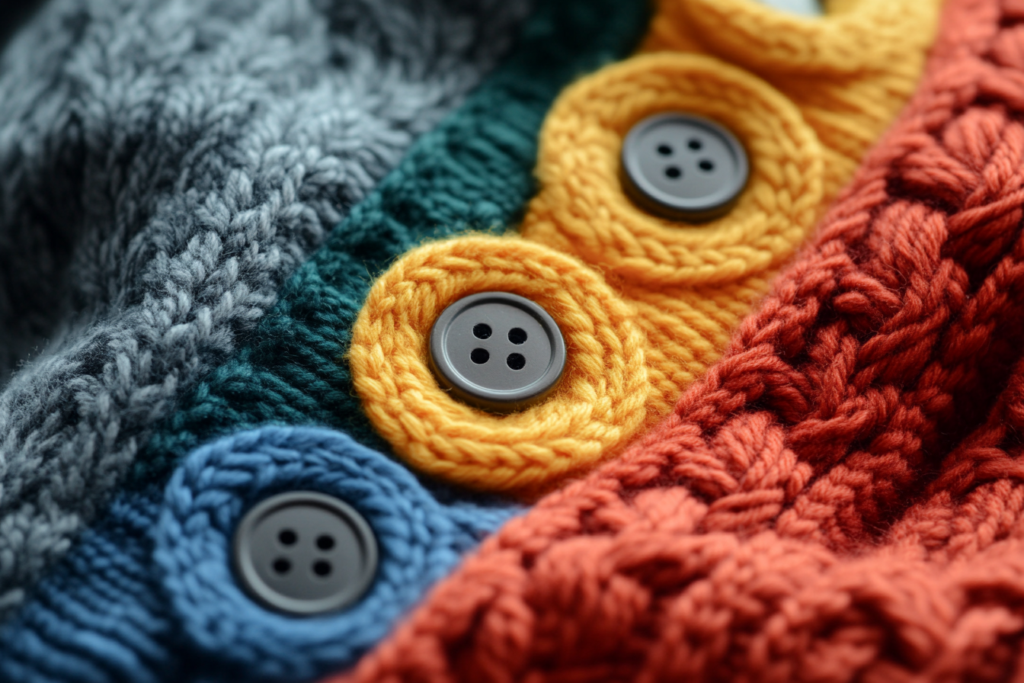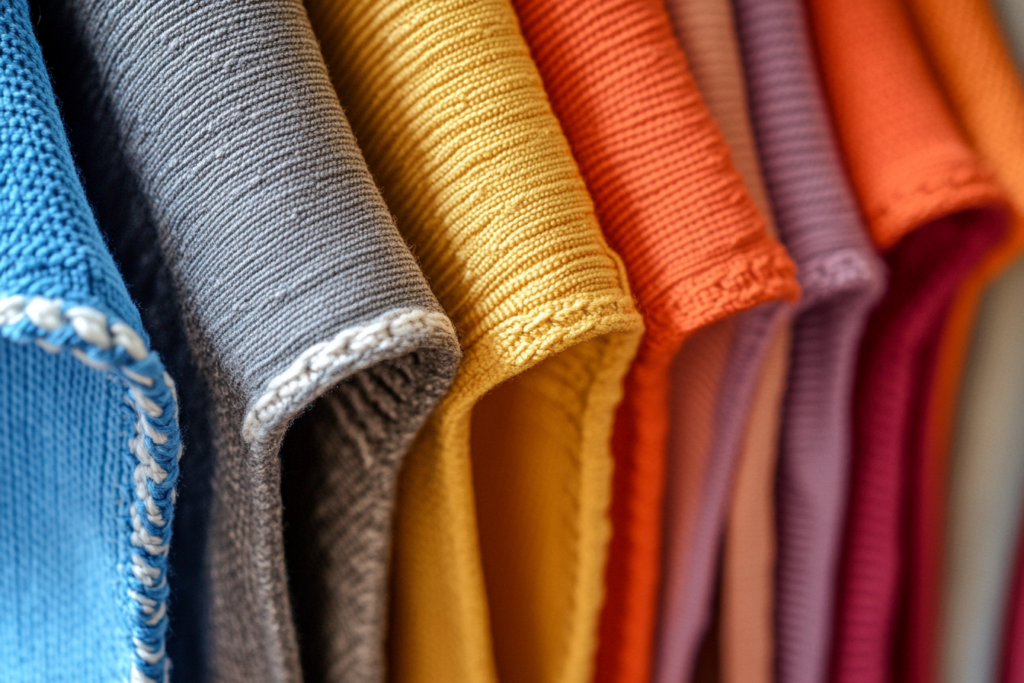Introduction: What is Dyed to Match (DTM)?
Dyed to Match (DTM) is a term used in the fashion and garment industry to describe the practice of color coordinating various elements of a garment to match exactly. This concept is primarily used for components like knitted piping, buttons, zippers, and other details that require color uniformity with the main fabric of the garment. By ensuring that all elements match, designers create a harmonious, polished look for the finished product.
For example, a DTM button will be dyed the same color as the fabric it is attached to, creating a seamless and aesthetically pleasing design. This color coordination method is crucial in ensuring that every detail of the garment complements one another, giving it a cohesive and refined appearance.


Why is Dyed to Match Important?
- Visual Appeal:
- Dyed to Match ensures that no component of the garment stands out in an unnatural way. When every detail is color-coordinated, the overall garment looks more sophisticated and well-thought-out. Whether it’s a zipper, button, or piping, a perfect color match helps create a smooth visual flow from top to bottom.
- Consistency in Brand Identity:
- For brands aiming to establish a strong identity, DTM is essential. Consistently matching colors across different pieces and styles reinforces the brand’s visual identity. The uniformity in design enhances the customer experience and helps brands stand out in the competitive clothing market.
- Elevated Design:
- Using Dyed to Match for small components, like piping or embroidery, allows designers to elevate their creations. A carefully matched color palette, down to the smallest detail, adds a layer of craftsmanship that reflects professionalism and attention to detail.
- Versatility:
- DTM isn’t limited to one fabric type or one specific garment style. Whether it’s a casual hoodie or a formal dress, Dyed to Match can be used to ensure that buttons, trims, and other details seamlessly blend with the fabric, regardless of the style or material.
Common Applications of Dyed to Match
- Knitted Piping:
- Piping is often used in seams, edges, or as decorative elements on garments. When dyed to match, the piping blends effortlessly into the fabric, creating a refined finish without drawing attention away from the overall design.
- Buttons:
- DTM buttons are commonly used in shirts, blouses, jackets, and coats. Matching the button color to the fabric ensures that the closure doesn’t disrupt the visual flow of the garment. This is especially important for formal or high-end garments where subtlety and elegance are key.
- Zippers:
- A DTM zipper is dyed to match the fabric color, ensuring that the zipper stays unobtrusive, enhancing the garment’s clean look. This is crucial for items like dresses, jackets, and pants, where zippers are functional yet need to stay out of sight.
- Embroidery and Trims:
- When embellishments such as embroidery or decorative trims are added to garments, dyed to match ensures that the color of these decorative elements blends seamlessly with the fabric. This attention to detail elevates the garment’s overall design.
Benefits of Dyed to Match (DTM)
- Aesthetic Consistency:
- One of the primary benefits of DTM is the aesthetic consistency it brings to a garment. The carefully coordinated color elements contribute to a polished and high-end look.
- Quality Perception:
- A garment with dyed to match components gives the impression of a quality product. It reflects the designer’s attention to detail and commitment to a perfect finish, creating a sense of luxury.
- Professionalism in Design:
- For fashion designers, incorporating DTM into their designs reflects professionalism. It shows the designer’s expertise in color coordination and enhances the garment’s overall appearance.
- Customization:
- DTM provides an opportunity for designers and brands to customize their garments by tailoring every detail to match their desired color palette. This level of customization can make the garment stand out in a crowded market.
Challenges with Dyed to Match
- Consistency in Dyeing:
- Achieving perfect color matching for all components can be challenging, especially if different manufacturers are involved in producing the components. Ensuring that all elements are dyed consistently and match the fabric color is critical to maintaining design integrity.
- Material Limitations:
- Different materials may absorb dye differently, making it difficult to achieve an exact match for each element. For example, natural fibers like cotton may react differently to dyes compared to synthetic materials like polyester.
- Cost:
- Dyed to Match processes can increase the overall cost of garment production, as additional time and resources are required to achieve precise color coordination. However, the result is a garment that stands out due to its cohesive design.
Conclusion: The Art of Color Coordination
Dyed to Match (DTM) is a valuable technique used by fashion designers and brands to ensure that every component of a garment complements the fabric’s color. By carefully matching buttons, trims, zippers, and other elements, designers can create garments with a polished, sophisticated look. While achieving perfect color coordination can be challenging, the results are worth the effort, as DTM enhances the garment’s overall appeal and elevates its visual impact. Whether you’re designing for casual wear or high fashion, Dyed to Match is a powerful tool that helps create garments that are both stylish and well-crafted.



